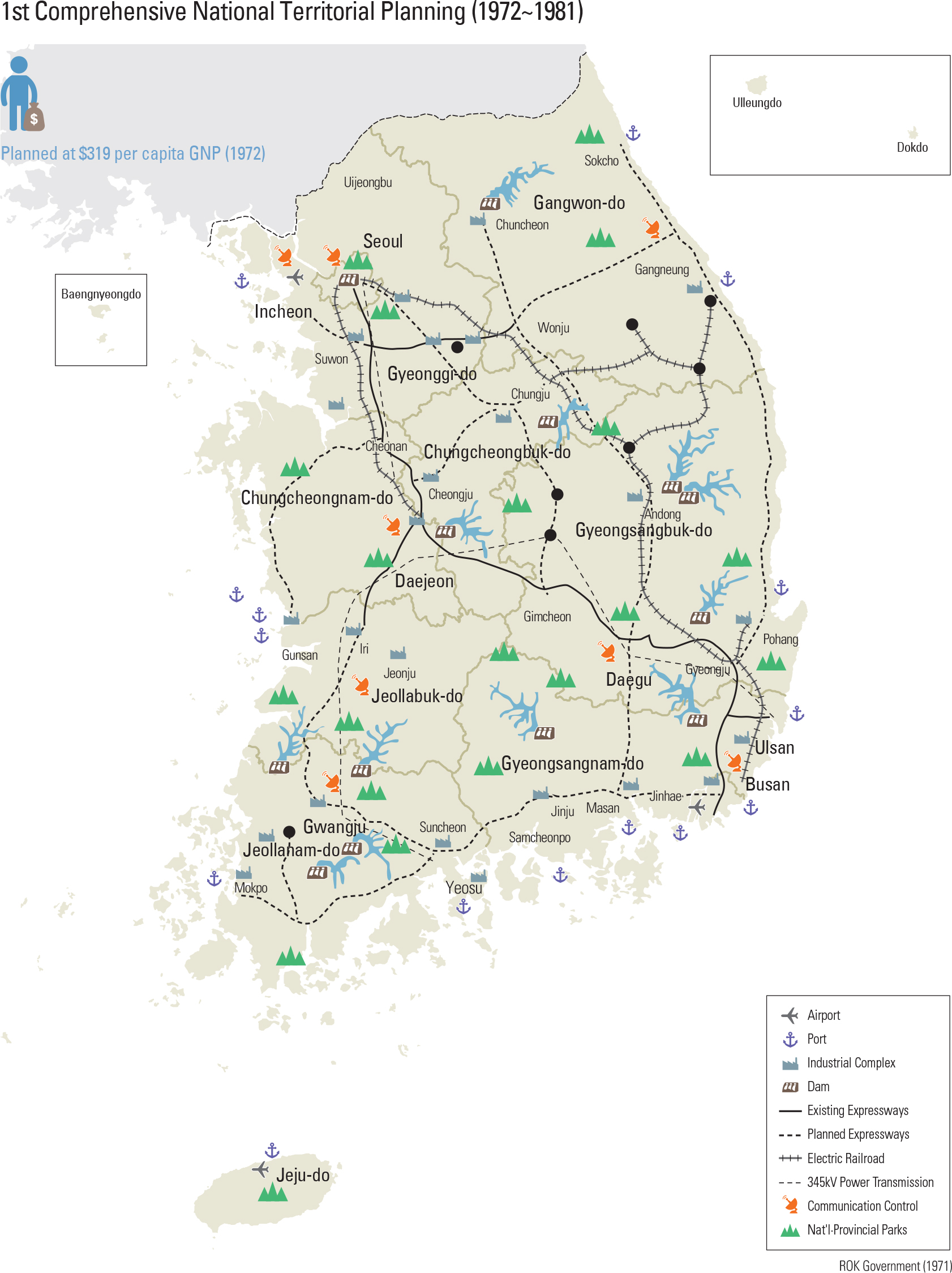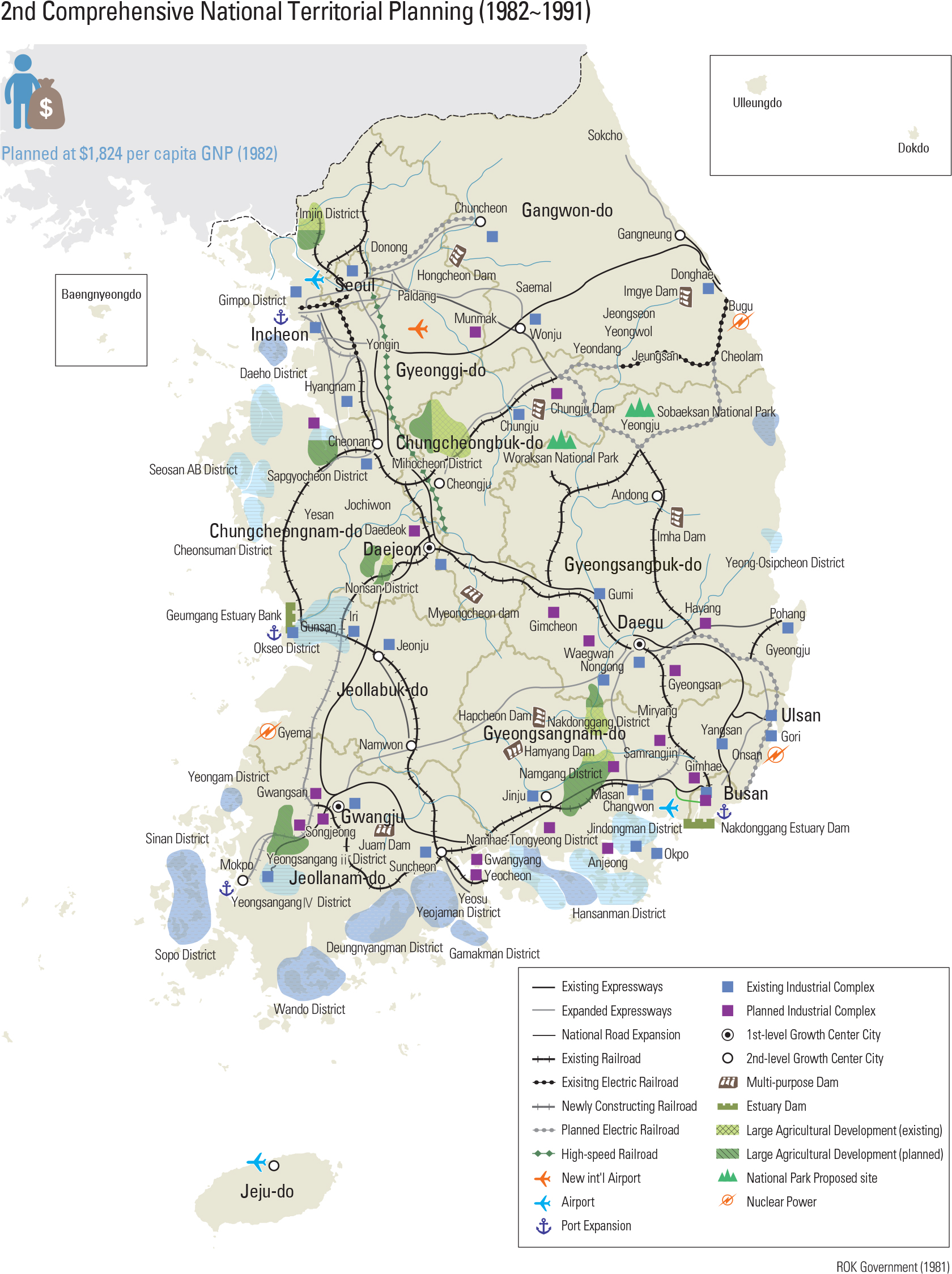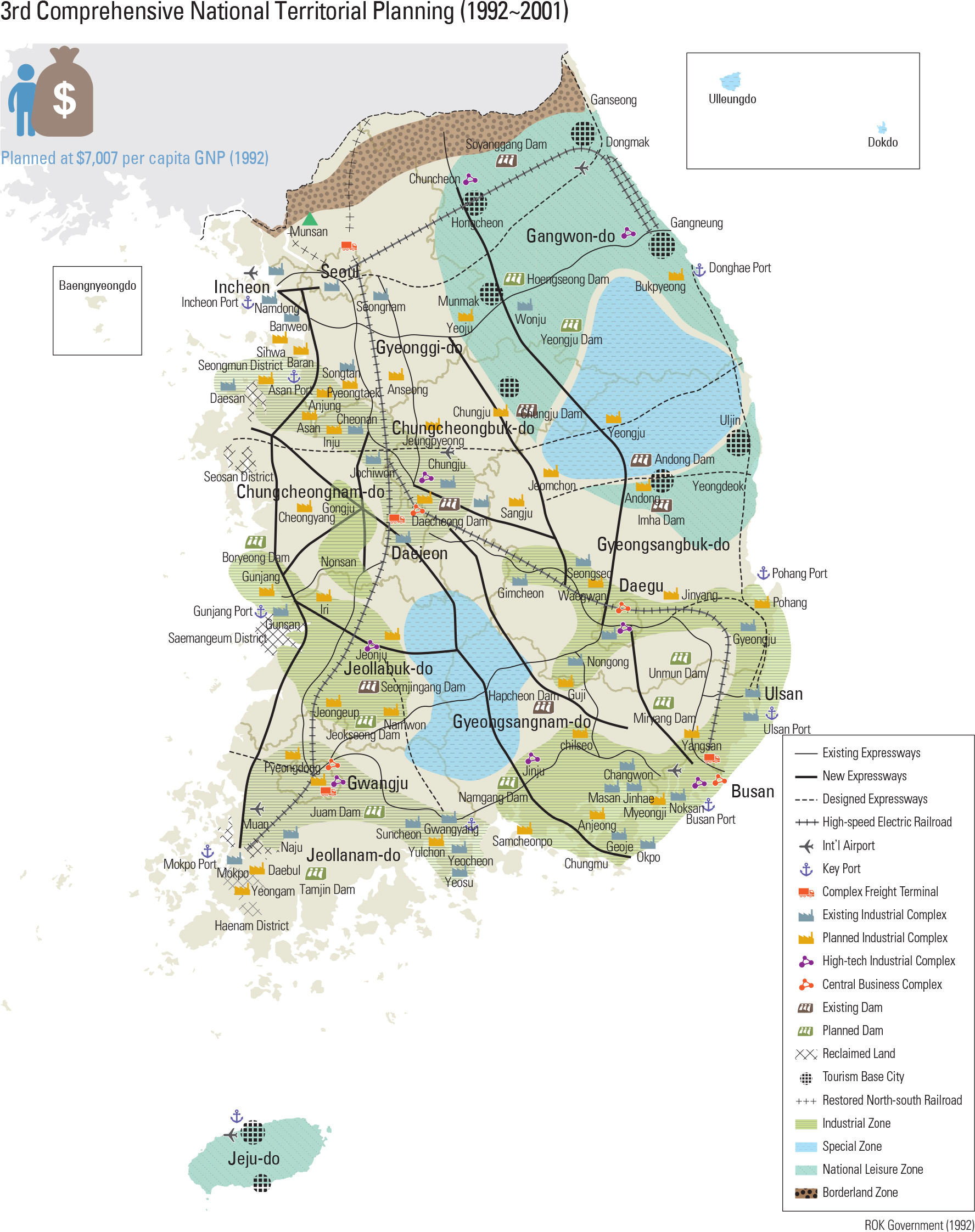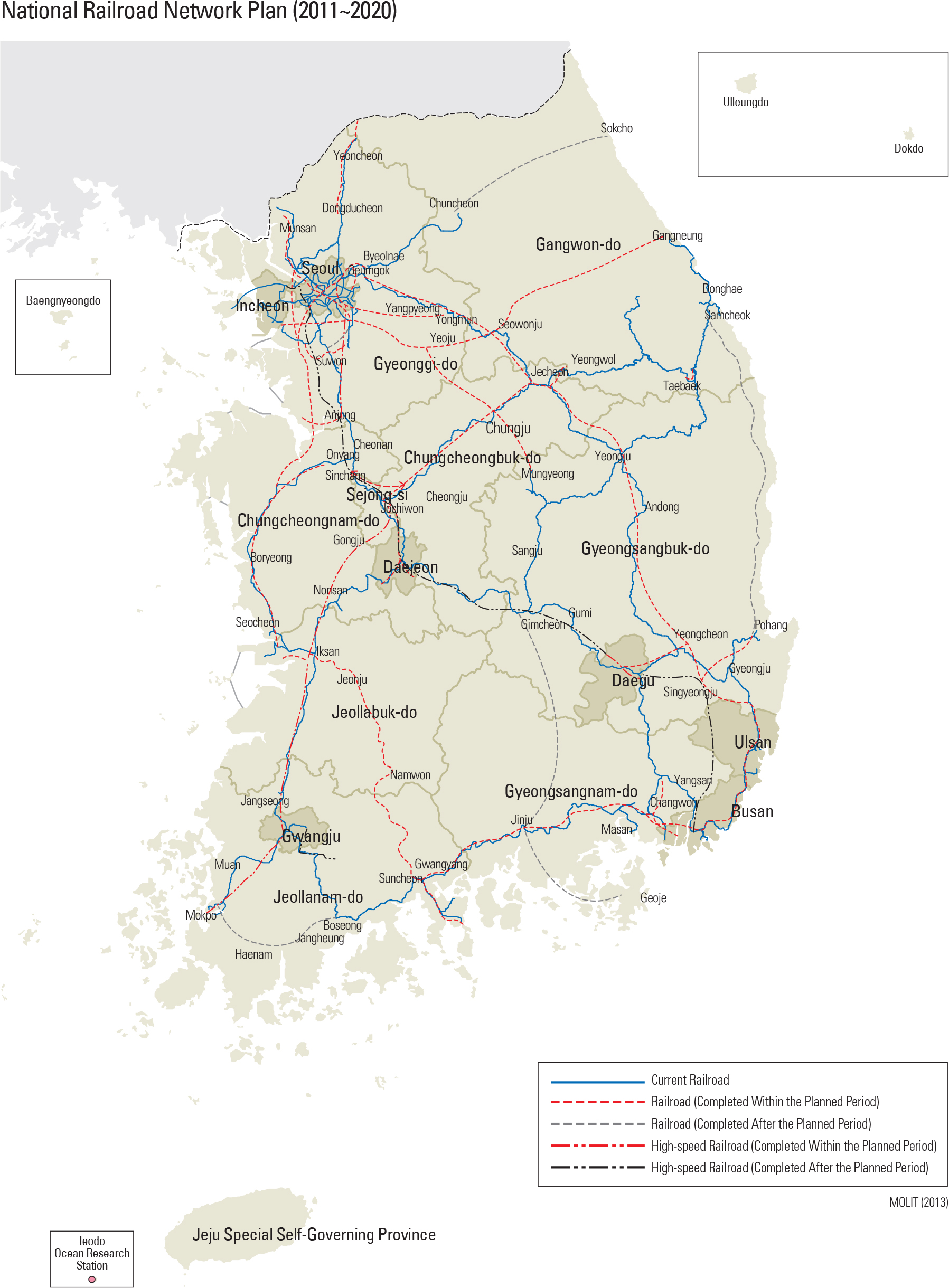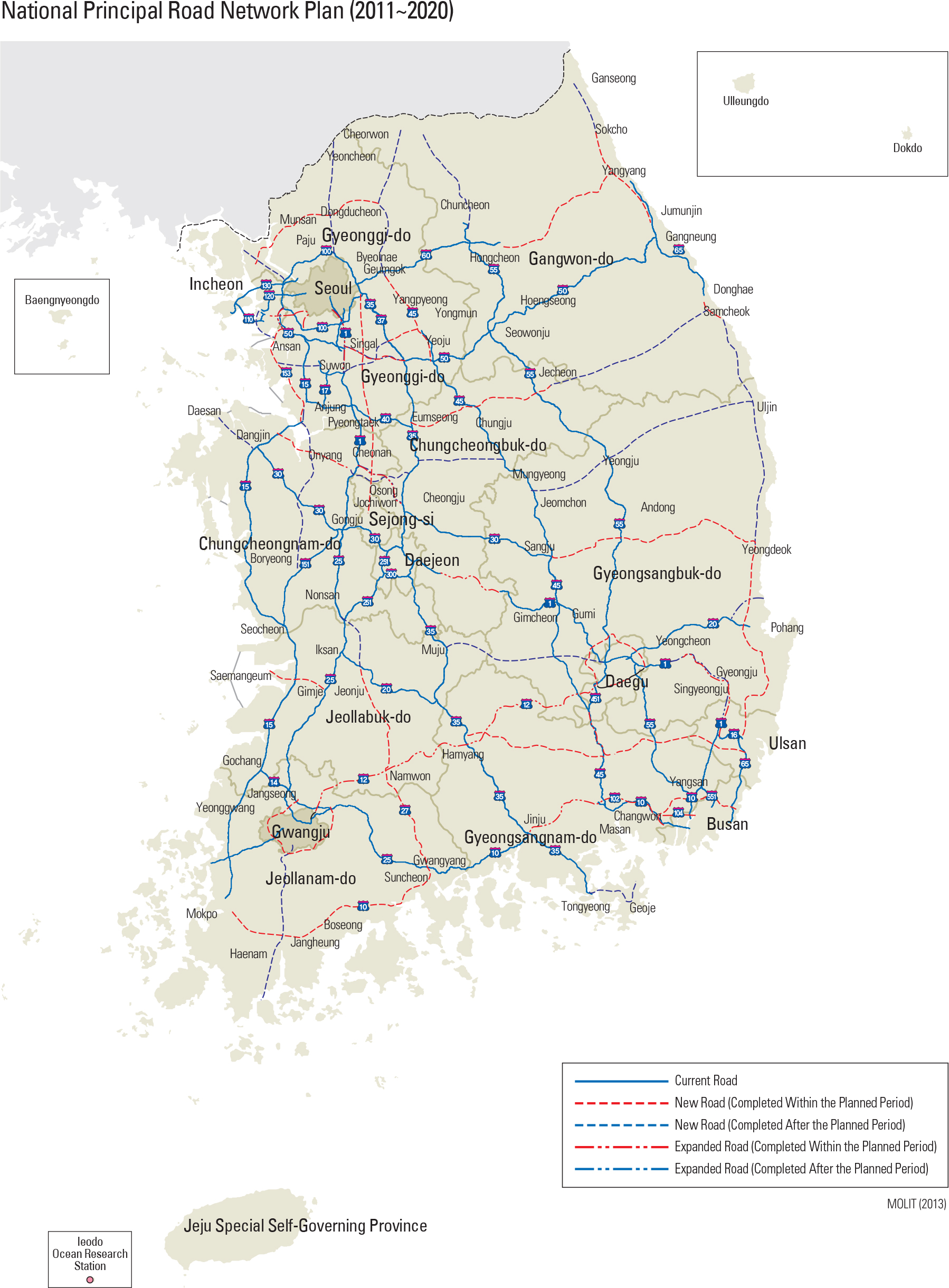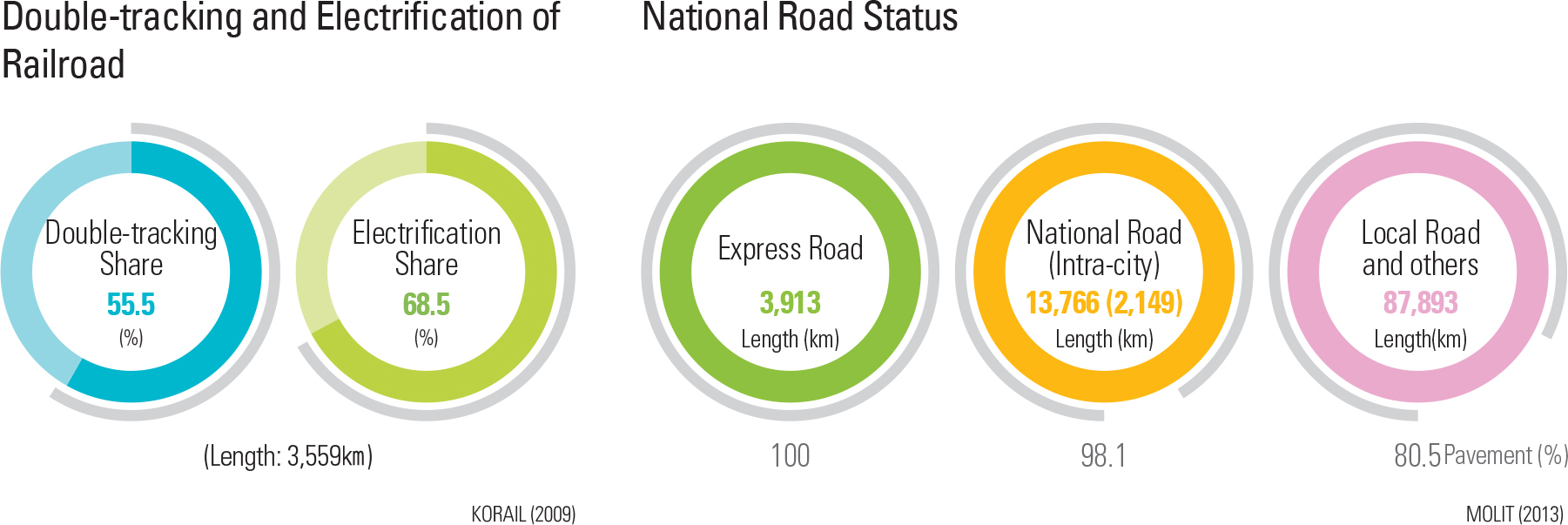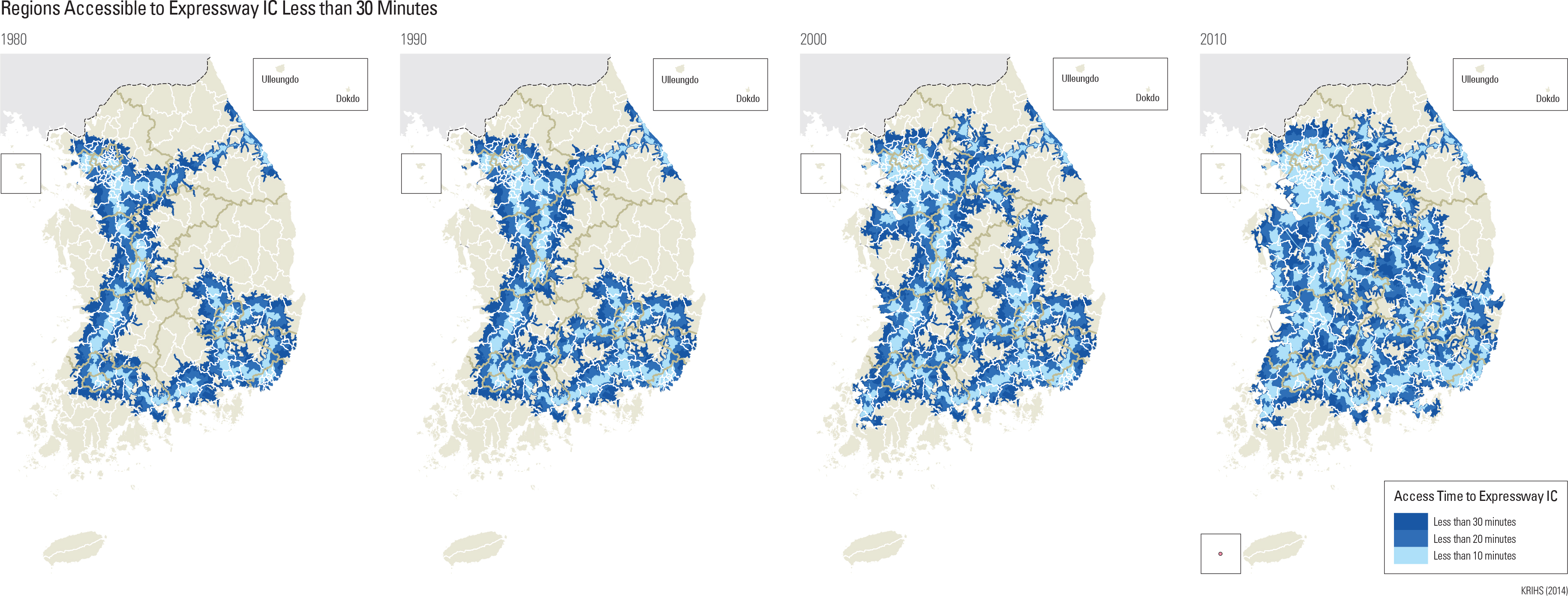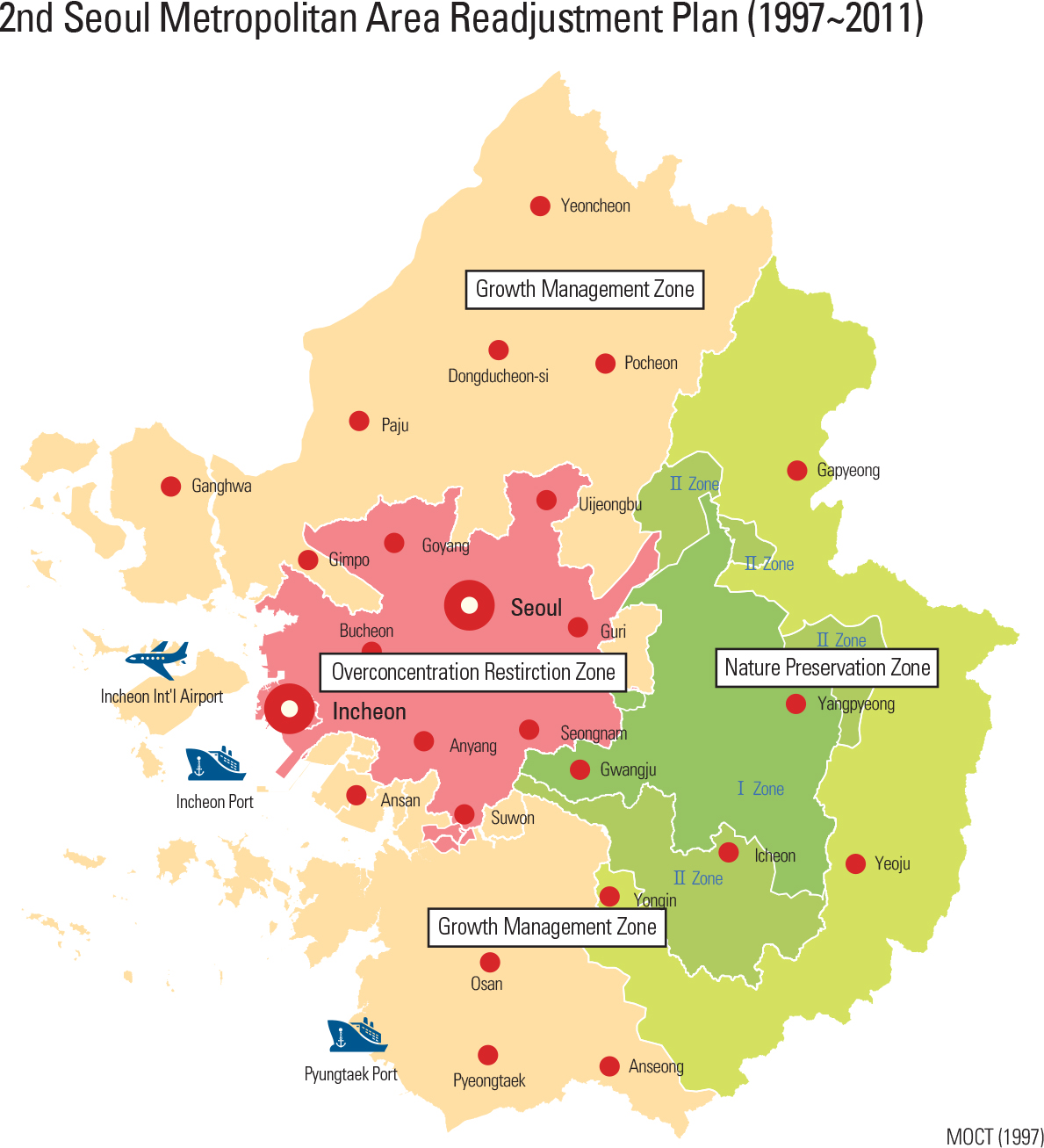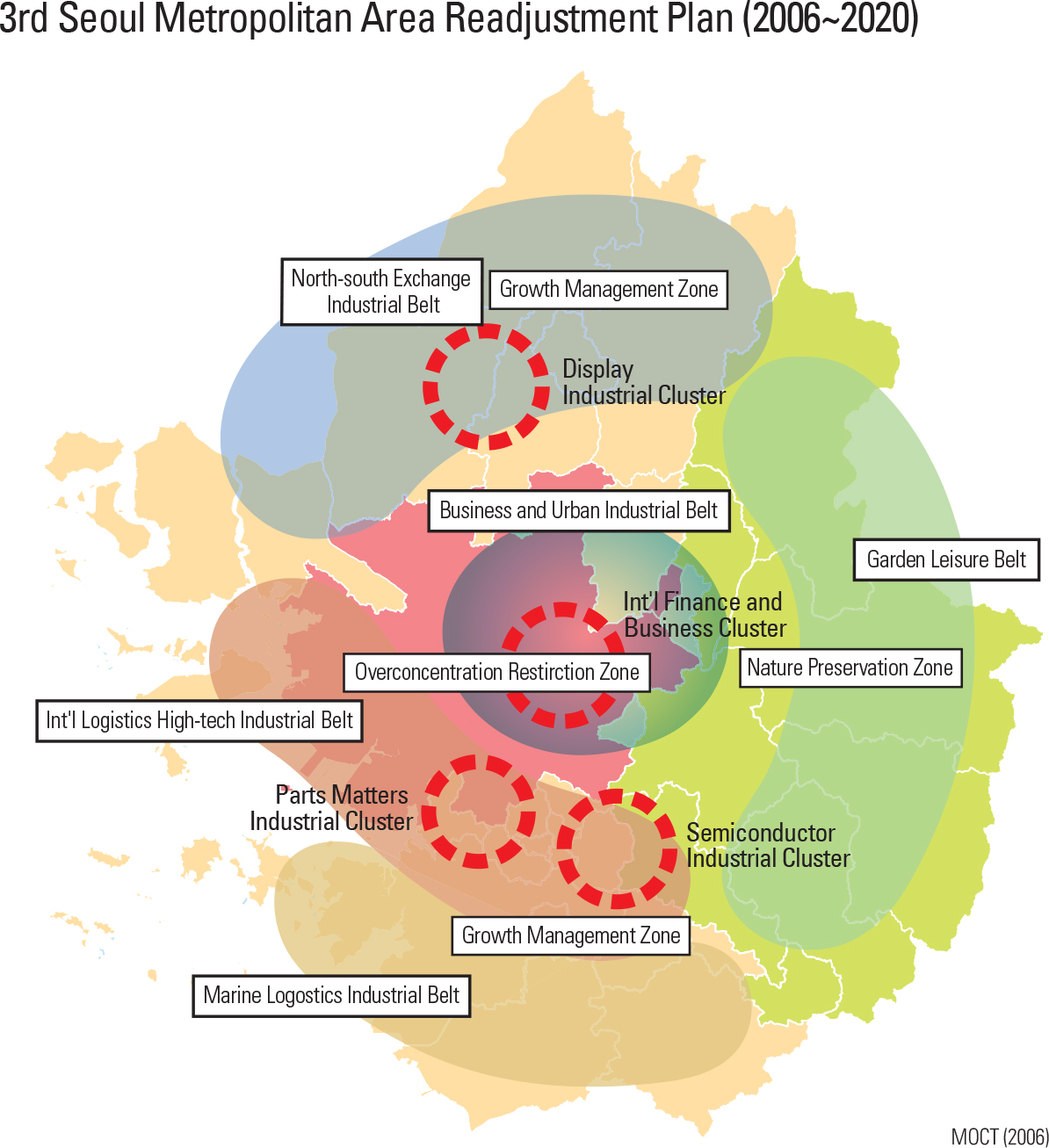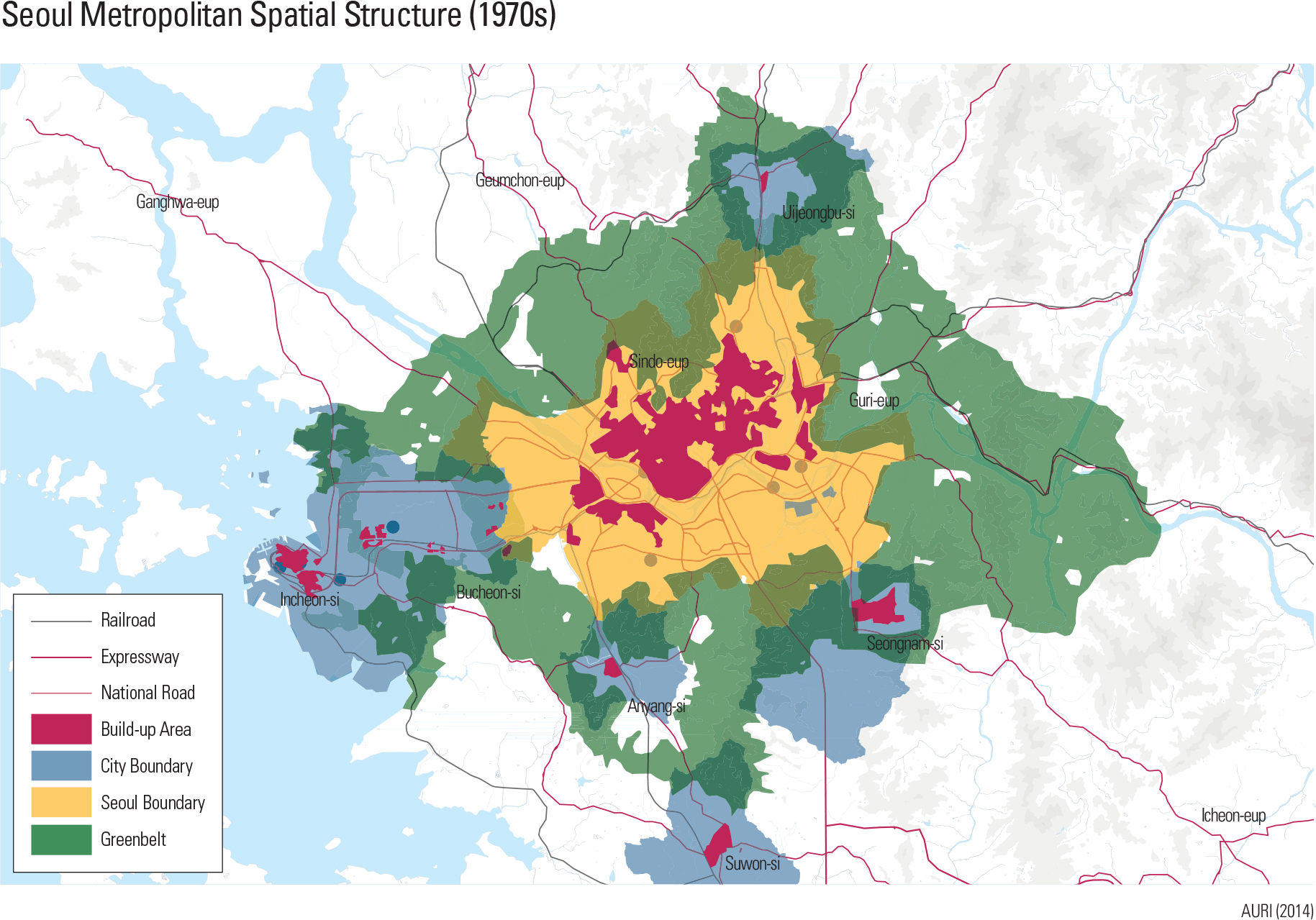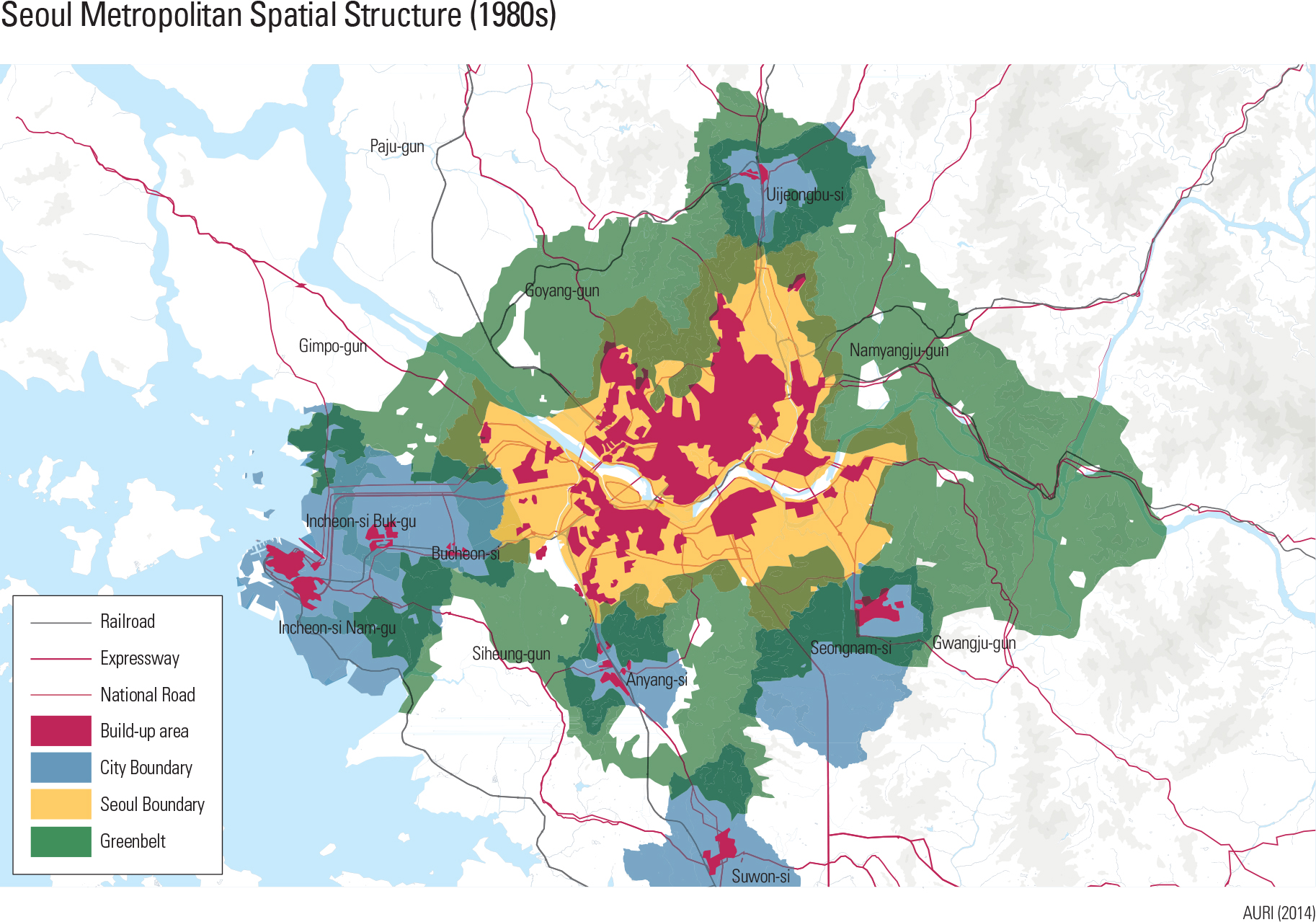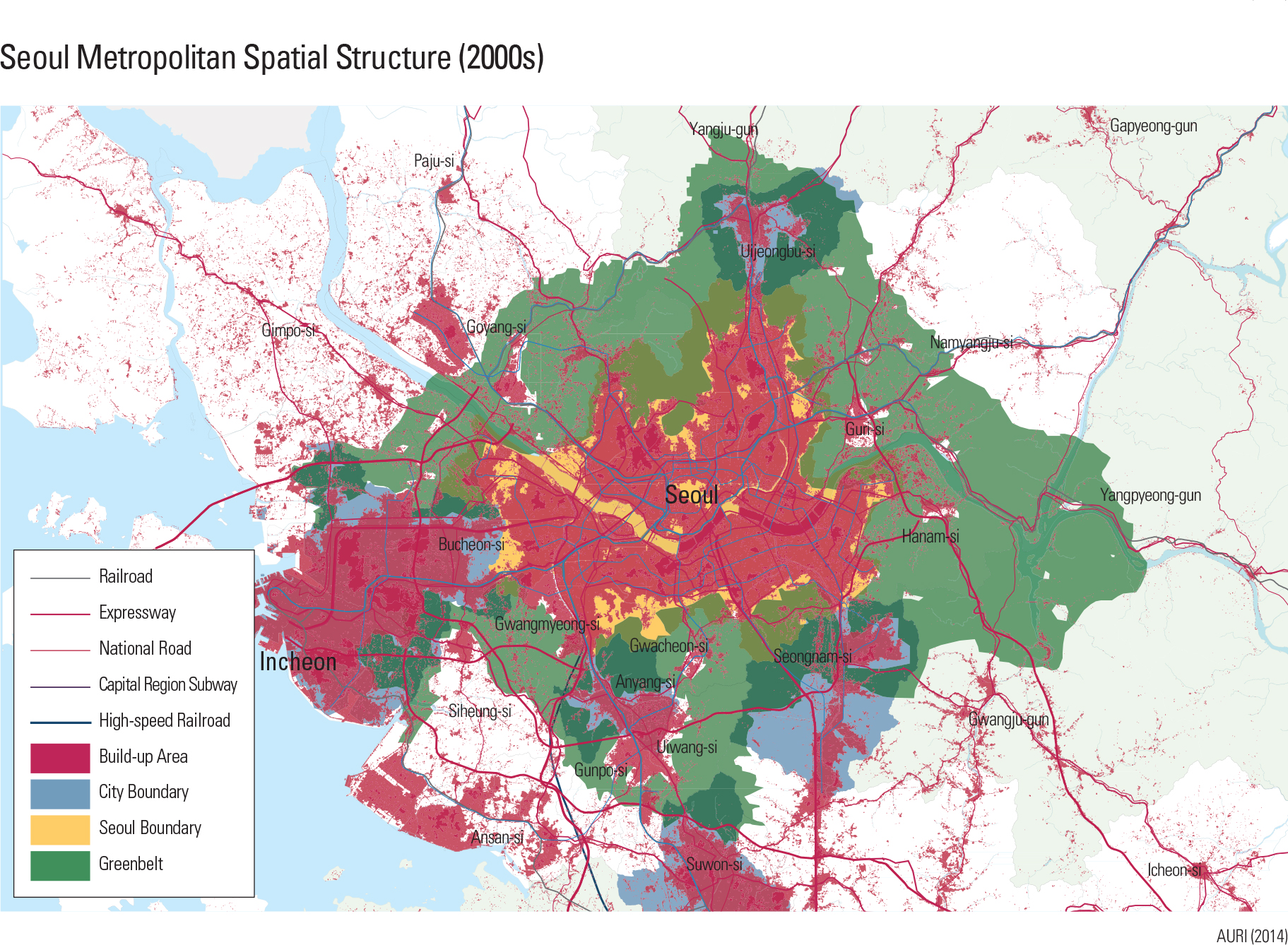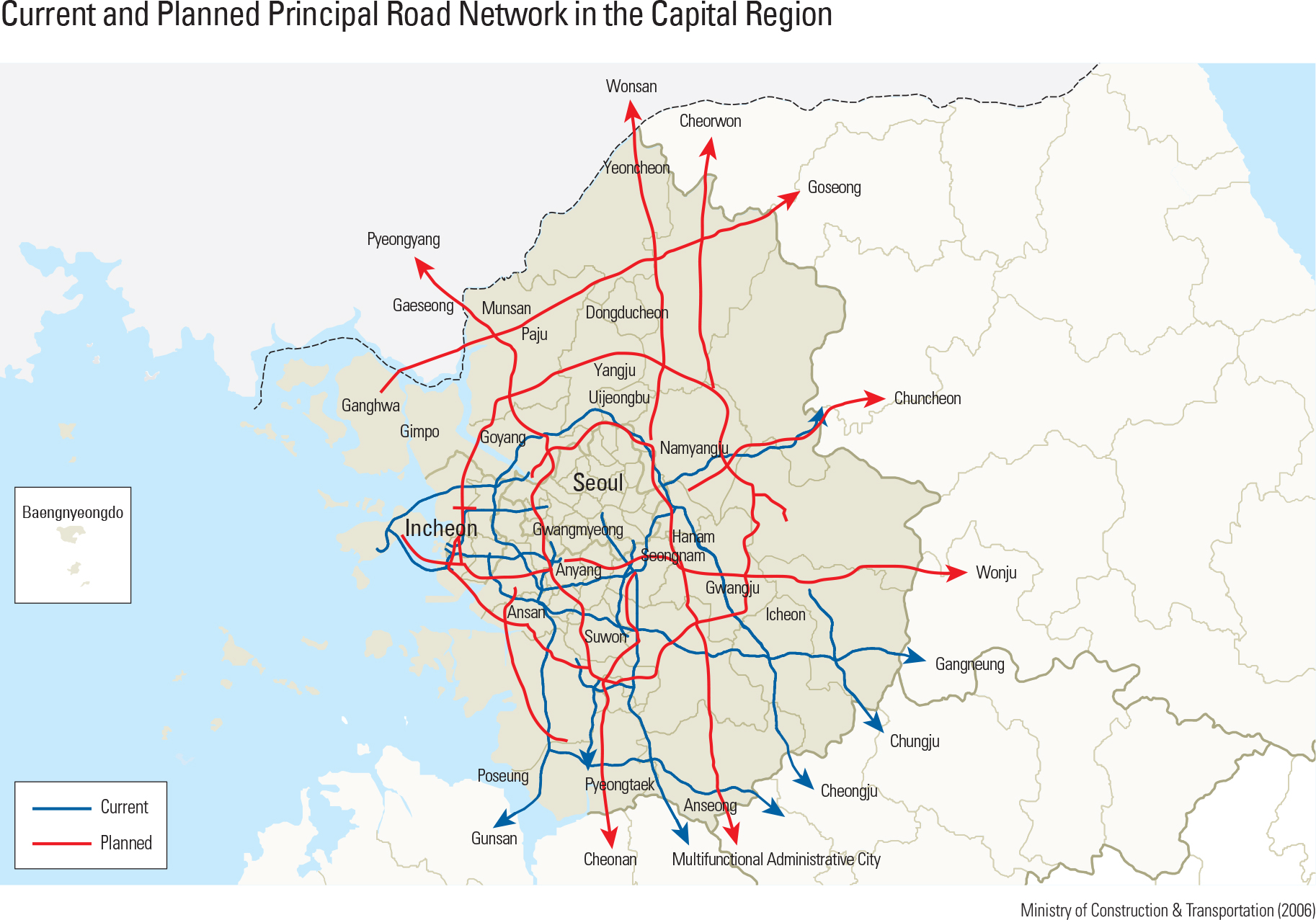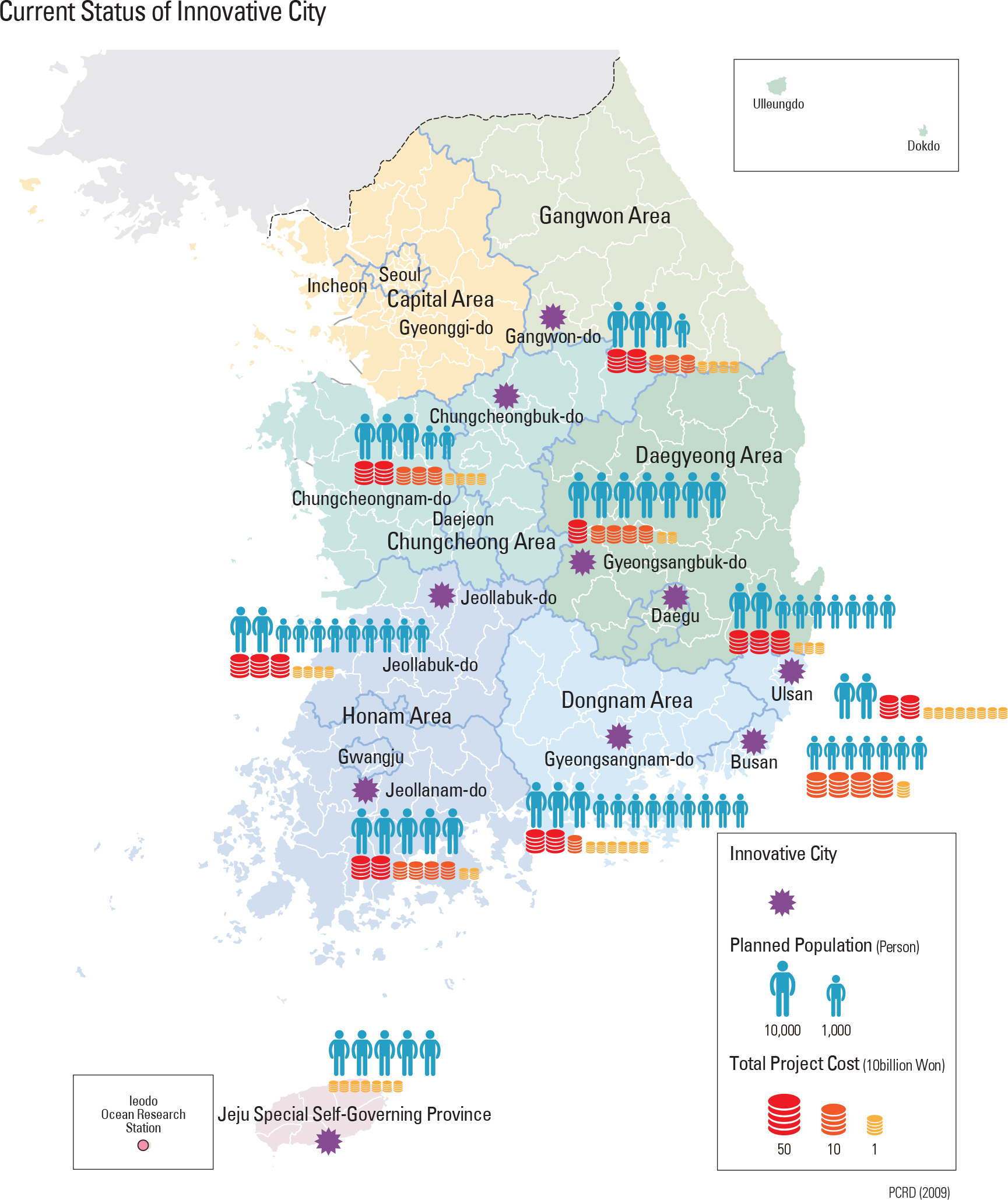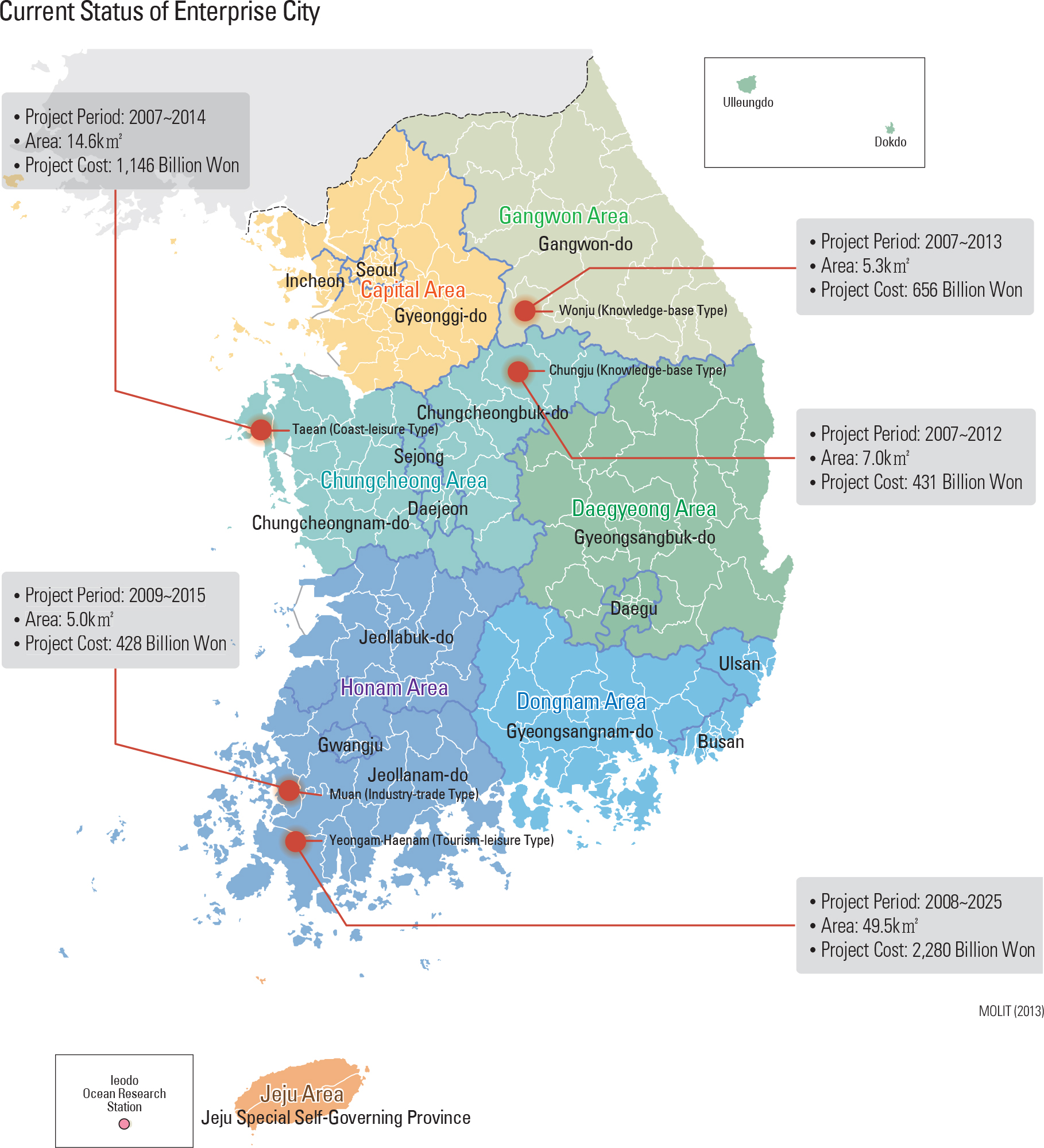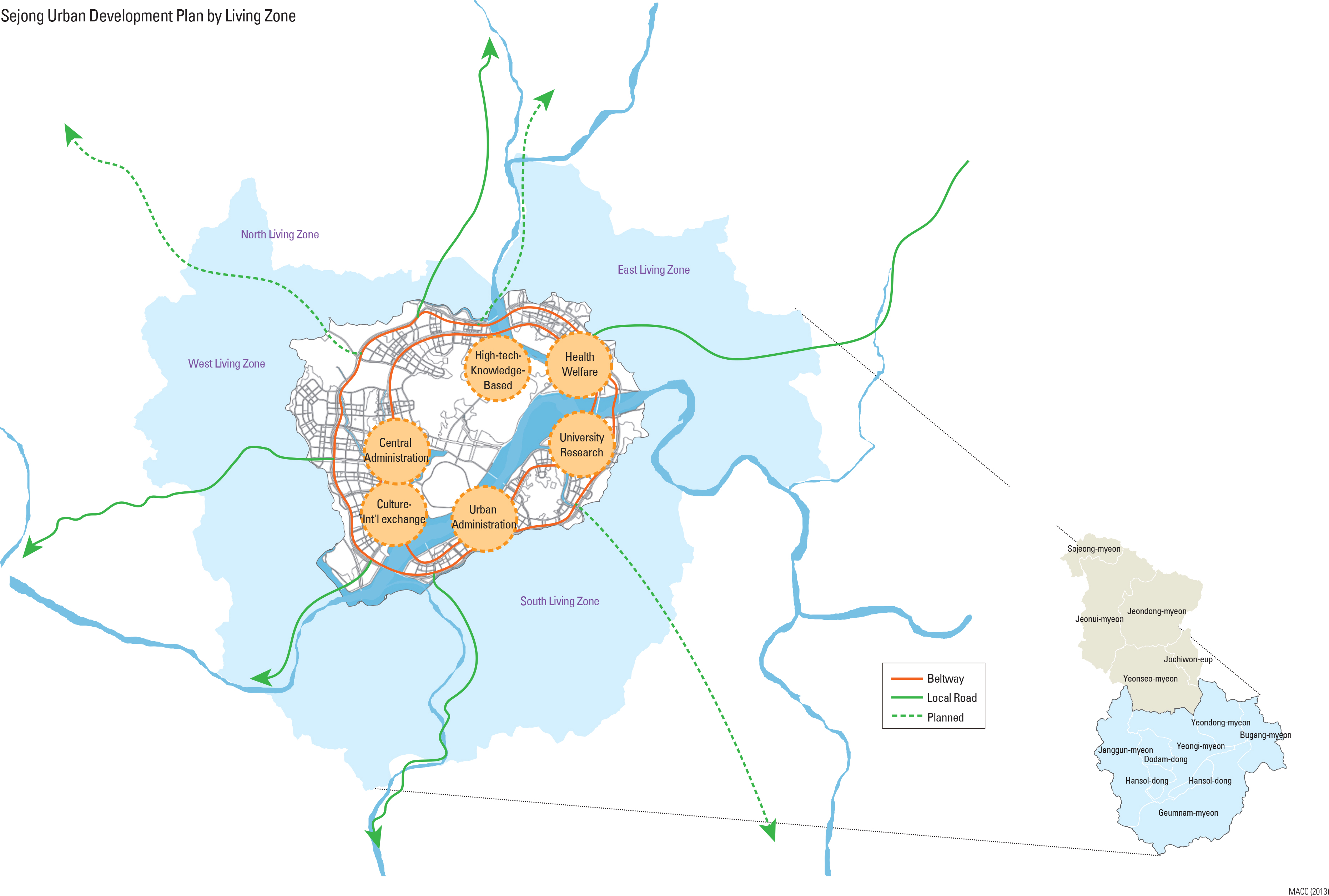The goals of the First Comprehensive National Territorial Plan were straightforward and focused primarily upon cultivating the effective use of the national territory, expanding social overhead capital, developing natural resources, protecting the environment, and improving the quality of life. These goals were aimed at fostering economies that could in turn facilitate the accumulation of wealth, a process that relied upon a nationally-led growth pole development strategy to assist in developing smaller regions. The plan’s main development strategy was predicated upon investing in large-scale industrial complexes, building supply chains for the transportation, communication, and energy industries, and strengthening the economic status of backward regions.
The Second Comprehensive National Territorial Plan aimed to implement a multi-pronged spatial plan to redefine the nation's territory for development in a manner that would help to achieve regional and life zone balance. This Plan specifically controlled the growth of two big cities, Seoul and Busan, expanded social overhead capital to backward regions, and further fostered the development of those as of yet undeveloped regions by designating them as promotion areas. In order to facilitate more balanced development and settlement in specific local areas, the Plan dispersed or relocated medium-sized industrial complexes to those areas deemed to have potential for growth. It also established industrial areas in regions that possessed favorable geographical conditions for development, and it pursued economic growth by connecting and integrating existing concentrations of industries to intra-regional industries. The Third Comprehensive National Territorial Plan applied multi-pronged development and regional economic bloc development strategies with the intention of continuing to invigorate underdeveloped regions in Korea. Specifically, the Third plan reduced the degree of concentration of industries in metropolitan areas, increased small and medium-sized industrial complex development in underdeveloped regions, and regulated new industrial complexes in metropolitan areas. It also attempted to spur the voluntary relocation of major companies to the provinces to help foster the redistribution of the population away from the congested urban centers. The plan also focused on upgrading the industry-related infrastructure of the southeast coastal industrial belts. It also contained revised environmental legislation, and it expanded express transportation networks between metropolitan areas and the more newly developed industrial areas.
The Fourth Comprehensive National Territorial Plan reflects the integrated national territory of the twenty-first century. It seeks to realize a globallyoriented national territorial structure and to promote globally competitive cities based on “Wide Area Economic Zones.” To achieve this goal, the Fourth Plan established a national supra-economic network of regional axes which linked wide area economic zones as well as the coastal areas with inland areas and further linked the three coastal areas and the border area between South and North Korea.

